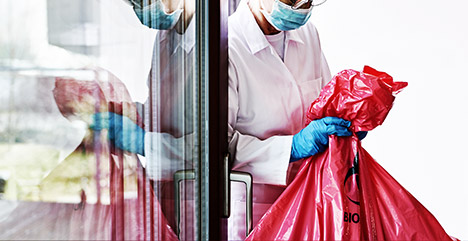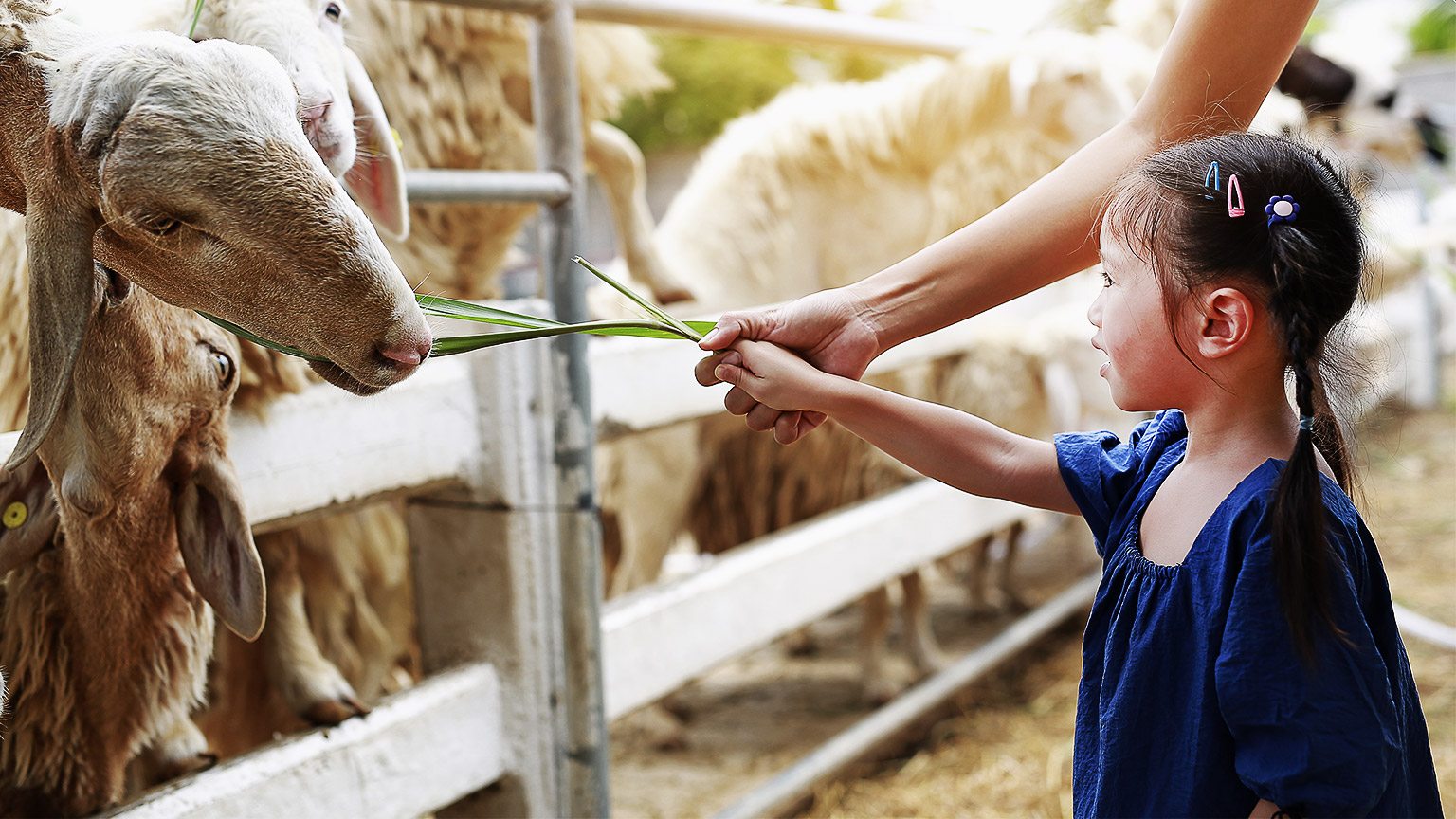What is sustainability?
Have you ever wondered what sustainability is? Sustainability is meeting the needs of current and future generations through the integration of environmental protection, social advancement, and economic prosperity (Government of Western Australia 2003). In other words, using resources and performing tasks in a way that will allow you to keep using those resources and doing the task the same way for a very long time.
There are three main components of sustainability, known as the pillars of sustainability:
- Environmental Protection
- Social Equity
- Economic Prosperity
It is recognised that for human activity and/or development to occur in a sustainable way, all three aspects must be assessed. The pillars are outlined in the following table.
| Pillar | Description |
|---|---|
| Environmental Protection | Includes minimising or eliminating impacts on the natural environment due to exploitation and development, while maintaining biodiversity, air and water quality. |
| Social Equity | Includes maintaining human rights, security, freedom to live in dignity and freedom from fear. |
| Economic Prosperity | Ensures the viability of a defined level of economic production over the long term, often focused on local communities. Economic prosperity is achieved when an organisation has adapted ways in which to use its resources more efficiently and effectively to reduce its impact on the environment. This includes practices such as using renewable energy, reducing waste, recycling and so on. |
The following video, The 3 Pillars of Sustainability (4:18 min), explains this framework and what happens when policies only support one pillar.
Principles of sustainability
When considering sustainability, there are four principles that work with the three pillars of sustainability. The four principles of sustainability are to:
- Limit the use of Earth's inherent resources
- Minimise waste
- Cultivate land wisely
- Provide quality work environments.
Global sustainability
Global sustainability, as the name suggests, is sustainability on a larger scale. That is, how sustainability is actioned across the globe.
Global sustainability action has increased significantly in recent years as the general population has become more aware of and motivated to act on key issues such as climate change, equality, and health and well-being. As a result, the United Nations developed 17 sustainable development goals (SDGs) in line with the three pillars model to combat these issues. The following table lists the 17 SDGs under their relevant pillars.
| Environmental Protection | Social Equity | Economic Prosperity |
|---|---|---|
|
|
|
17 Sustainable development goals

















The goals related to Environmental Protection, as well as other global initiatives and targets, are used by individual countries, states and territories, industries and workplaces as an underpinning to environmental sustainability legislation, regulations, codes of practice, policies and procedures. How can these goals be implemented in the animal care workplace? A good example of professionals taking sustainability seriously can be found at Vet Sustain, a volunteer group working to help veterinary professionals become more environmentally sustainable in their practices (Vet Sustain n.d.). Check out their Greener Veterinary Practice Checklist (pdf) for inspiration. We will work through steps you can take in your own work role throughout this module, so that you can make a difference too.
It is important that you have a general understanding of applicable legislation and regulations as they relate to your job role in the animal care industry. You are not required to be an expert in all the laws and regulations, that can be left to management. However, it is really important that you are aware of and understand the aspects of the laws and regulations that are relevant to your job so that you can remain compliant. Non-compliance may result in fines for you as an individual or for the company you work for, a loss of licence that allows the workplace to function or, in extreme cases, be considered a criminal offence.
To gain a greater understanding of laws related to this topic, review the top 10 things you should know in the following video, Environmental Law: A Very Short Introduction (4:02 min).
In Australia, environmental sustainability legislation and regulation is largely administered at the State Government level, therefore there are variations between the different states and territories. However, there are often common themes that feature in each instance of state or territory law or regulation. These common themes include:
- water
- pollution
- climate change
- forestry, clearing of vegetation or trees
- mining and gas
- native plants and animals
- chemicals and pesticides
- farming
- coastal, marine and fisheries management
- national parks and protected areas.
To locate the relevant legislation for your area, select the icon in your state or territory on the following image. In the pop-up box, refer to the website link to view or download a copy of your local Animal Welfare; Prevention of Cruelty; Workplace, Health and Safety; or Environmental Protection legislation. Alternatively, the Australian Veterinary Association provide links to the relevant legislation and regulations for the different states and territories, which you can see by scrolling down to the 'Environmental Protection Acts' section.
Federal versus local government
When looking at legislation, there are two categories to consider:
- Federal, state and territory government legislation
- Local government by-laws and regulations.
Federal, state and territory government
The Environment Protection and Biodiversity Conservation Act was first passed by the Australian Federal Government in 1999. This legislation oversees the protection of the environment, conservation of biodiversity, sustainable land management and natural resource use in Australia.
The Environment Protection and Biodiversity Conservation Act 1999 and Environment Protection and Biodiversity Conservation Regulations 2000 are supported in all states and territories by a number of specific state and territory government laws, such as:
- The Flora and Fauna Guarantee Act 1988 (Victoria)
- Biodiversity Conservation Act 2016 (New South Wales)
- Environment Protection Act 1993 (South Australia).
These Acts are upheld by state- and territory-based environment protection authorities.
Local government
In addition to the federal, state and territory environmental legislation, there are local government by-laws and regulations that need to be considered.
Examples of local government by-laws
- Regional land plans
- Water management plans
- Animal control regulations
- Health, Safety and Amenity Local Law 2021 (or local laws according to where you work)
- Advertising laws
- Neighbourhood nuisances
By-laws are local laws established by councils to deal with issues specific to the relevant council area.Adelaide Hills Council, 2020
A good example of typical local government by-laws can be found in the Adelaide Hills Council, South Australia.
The Adelaide Hills Council by-laws
- Permits and Penalties
- Moveable Signs
- Local Government Land
- Roads
- Dogs
- Cats
Now that you have started to establish your understanding of what sustainability is and the importance of legislation that supports it, it is now time to look at how it is applied to the animal care industry.
There are common industry codes of practice that outline the expected procedures for environmental sustainability. The animal care industry incorporates the following six sectors:
- Companion animal services
- Animal control and regulation
- Captive animal management
- Veterinary practices
- Wildlife rescue and rehabilitation sector
- Animal technology.
Various industry organisations cater to one or more of these sectors. The codes of practice, policies and articles produced by these industry associations often refer to environmental sustainability because it affects all areas of animal care.
For example:
- Australian Veterinary Association - Climate change and animal health, welfare and production
- Meat & Livestock Australia – ABSF Annual Update: Australia a global leader in sustainable beef production
- Zoos Victoria - Environmental Sustainability Investment Prospectus.

Workplaces have a social and, in some cases, regulatory responsibility to implement environmental sustainability policies and procedures. These policies and procedures are documented to help to communicate to employees, customers and other stakeholders how the company is working to improve its practices to benefit and sustain the local environment.
Workplace policies and procedures
Workplace policies and procedures include, but are not limited to, the following five categories:
- Energy
- Water
- Transportation
- Hazardous materials
- Waste management.
To get an idea of a workplace policy, examine the Sustainability and Environmental Policy, created for the Centre for Corporate Health to “integrate environmental sustainability into its operations, practices and decision making” (Centre for Corporate Health 2022).
Energy
Energy is the amount of ‘work’ an appliance or machine does and is measured in Joules (J). You may have heard of the term ‘energy efficient’. This term essentially means to use less energy to provide the same service. The energy efficiency of household appliances is typically presented by stars. The more stars, the more energy-efficient the appliance will be.
Most appliances and machinery use electricity for energy. So, when an appliance has high energy efficiency, it uses less electricity and is cheaper to use than a similar appliance of lower energy efficiency. Therefore, it is in the best interests of a business to conserve energy use by:
- Installing energy-efficient equipment and appliances, such as washing machines and dryers. This is particularly important when working in veterinary hospital settings where laundry is frequent.
- Switching electrical equipment and devices off when not in use.
- Turning lights off when not in use and at end of shifts.
- Installing more sustainable energy sources, such as solar panels.
Fun fact!
Did you know, installing an energy-efficient commercial gas dryer could also be a wise money-saving green option (Shaw 2015)?
Water
Water is used in many different ways within a workplace. For example in taps, toilets, showers and baths; dishwashers; evaporative air conditioners; and garden watering systems. Australia is a dry continent and drinking water must be conserved as much as possible. Working in animal care requires a lot of water to be used, such as when you are maintaining the cleanliness and hygiene of the clinic or practice or working in a dog grooming salon. You also need to consider the number of animals that are in the facility and their requirements, not only for hydration but keeping them clean. Imagine how much water is needed to wash a Great Dane!
Methods to reduce water use in the workplace include:
- Using low flow taps or installing a restrictor or aerator
- Fixing dripping taps
- Installing taps that turn off automatically in bathrooms
- Using water-saving toilets, such as dual flush
- Considering appliances with high water efficiency such as:
- A hydrobath that uses the minimum water needed per cycle
- A hydrobath that recycles water rather than a bath or sink where all water goes down the drain
- A double tank hydrobath, which recycles water more efficiently than a single tank hydrobath.
- Ensuring there is thermostat control on air conditioners and setting it to an appropriate temperature
- Using timing devices on automatic sprinklers so they don't operate in the heat of the day
- Installing water tanks or using bore water for gardens, washing machines and toilets
- Using energy- and water-efficient washing machines (washing machines are an integral appliance in animal care where towels and blankets provided at the clinic need to be washed and dried to adhere to hygiene practices)
- Considering the size of the loads you are washing (you should not run a full cycle for three small hand towels, but rather wait until you can fill the machine and then run the washing cycle).
Transportation
The workplace may offer a transportation or delivery service as part of its operations, or it may receive regular deliveries from transport companies. In addition to work-related transport needs, there are also employees' private transport methods for commuting to and from work. Often, employees commute in a car by themselves.
Ways to improve environmental sustainability regarding transportation include:
- Regular fleet maintenance
- Using cleaner fuels
- Encouraging staff carpooling, use of public transport or cycling where possible.
Hazardous materials
Animal facilities use materials that can pose a considerable hazard to employees, the general community and the environment. Often, the use of these hazardous materials can’t be avoided. However, measures can be taken to ensure their impacts are minimised. The use and disposal of hazardous materials is regulated by Local and/or State Governments and workplaces must comply with the requirements or face fines and other ramifications.

Examples of hazardous materials include:
- Corrosive chemicals (undiluted)
- Petrol and oil products
- Biological products – for example, carcasses, infectious tissue, faeces and contaminated bedding
- Clinical waste – for example, sharps, bandages and swabs.
As you will have already learnt, it is also essential to create a clean and hygienic work environment, especially when working with animals in any veterinary clinic. You will need to ensure you are using cleaning products that are safe around people and animals but can kill unwanted pathogens (any microbe that causes disease and that can be spread). The clinic may want to consider swapping their cleaning products for equally effective, yet biodegradable cleaning products. These products are less likely to contain dangerous and damaging disinfectants, such as sodium hypochlorite (Shaw 2015).
Waste management
All workplaces generate waste of some kind. Waste management is the collection, transport, processing, recycling or disposal, and monitoring of waste materials. A well-made waste management plan should include all waste control elements including collection, transportation, processing, recycling and/or disposal of waste products. All industry sectors can improve their waste management by using resources and disposing of waste responsibly. However, not everything needs to end up in a landfill.
Watch the following video (1:36 min) where Melbourne Zoo’s Sustainability Manager explains their 3-bin waste system as part of achieving their goal of zero waste to landfill.
The American Veterinary Medical Association worked with the US Environmental Protection Agency (EPA) to formulate good management practices to tackle pharmaceutical waste. Review the following video, The AVMA’s tips on how to dispose of pharmaceutical waste for some great information that could be used in your animal care workplace.
The six Rs
Workplaces should consider the implementation of the ‘Six Rs’ to help reduce their waste production:
- Rethink – Consider whether the item needs to be used at all, or if an alternative item or process could be used.
- Refuse – Stop buying items that are not needed or are unethical or unsustainable in their production.
- Reduce – Change processes to limit the consumption or use of certain items.
- Reuse – Replace single-use items with reusable options where possible; try to find ways to repurpose single-use items before disposal.
- Repair – Where possible repair damaged items or equipment before replacing them. When replacement is necessary, try to find more efficient, durable and sustainable options.
- Recycle – Sort items appropriately for collection and recycling, when items are not sorted correctly, the entire batch may end up in landfill instead of being recycled (Mridul 2021).
With the increase in costs for handling waste and overflowing landfills, waste reduction is now a necessary option. Considerable waste created by any business can be recycled. The use of the appropriate bins is a step in the right direction to minimising landfill.
Here are a few additional waste reduction techniques that can benefit every business and the environment:
- Conduct a waste assessment. Looking into what your business purchases and throws away will tell you the types of waste your facility generates. This information will help you identify the items that can be recycled or composted and where changes can be made to the items purchased.
- Implement a recycling or composting program.
- Purchase recycled products.
- Send packaging back to suppliers.
- Use reusable cleaning cloths, bandages and napkins.
The use of X-rays is common in the animal care industry, especially in a veterinary practice. Most X-rays are printed. However, with emerging technology, X-rays can now be viewed digitally. Consider switching to digital radiography over conventional film-based X-rays, which use hazardous chemicals and film that can’t be recycled and will end up in landfill (Shaw 2015).
In addition to these practices, you may wish to consult with government associations to help support your business in the movement towards a sustainable approach. In some cases, there may be the option for financial support to help with the cost of transferring products to adhere to sustainable practice.
As you are just starting in the industry, you have an opportunity to undertake training in your workplace. Taking initiative is always one way to show your dedication to the job and seeking additional training for sustainability may be a good way to start. There may be opportunities to engage in professional development workshops where you can obtain information on creating a sustainable workplace. The information you learn should be shared with those working with you.
Let’s look at the following case study. This case study has been created to enhance your understanding of how changes in practices can be made to support the animal care workplace towards the movement of sustainable practice.
Each month, the team at Noah’s Ark Veterinary clinic engages in a team meeting. The meeting agenda for this month is on the topic of sustainability. Steve and Debbie have bought the team together to discuss the following:
- Current practices they have in place.
- Suggestions for future sustainable practices.
- Advantages and disadvantages (pros and cons).
- Cost involved.
- Are they working?
The following diagram outlines the current sustainable practices the team have in place.
During the meeting, Debbie, and Steve asked the team to brainstorm some of the pros and cons of the current processes they have in place. The following table outlines the pros and cons the team came up with concerning their current sustainable practices. In addition to these pros and cons, solutions for the cons were identified where possible.
| Current practice | Pros | Cons | Solution |
|---|---|---|---|
| Carpooling |
|
|
|
| Skylights |
|
|
|
| Recycling |
|
|
|
| Washing machines and air conditioning |
|
|
|
The team worked together to brainstorm some new ideas that had not yet been considered for sustainable practice. These ideas were carefully considered in terms of cost and the time required to implement the new procedures. Areas where extra research is needed before clear goals can be established were identified as well as discussing contacting local environmental personnel for advice on moving forward.
Debbie and Steve displayed these new goals on the whiteboard in the staff area where the team would be able to add to them should ideas come to mind. These suggested goals will be reviewed at the next team meeting.
The starting goals for new sustainable practices have been illustrated in the following diagram.
- Biodegradable chemicals
- Switch to LED lighting
- Staff training on additional sustainable practice
- Paperless records - moving to digital
- Stock eco-friendly supplies
- Engage with government organisations
Knowledge check
Complete the following questions.

